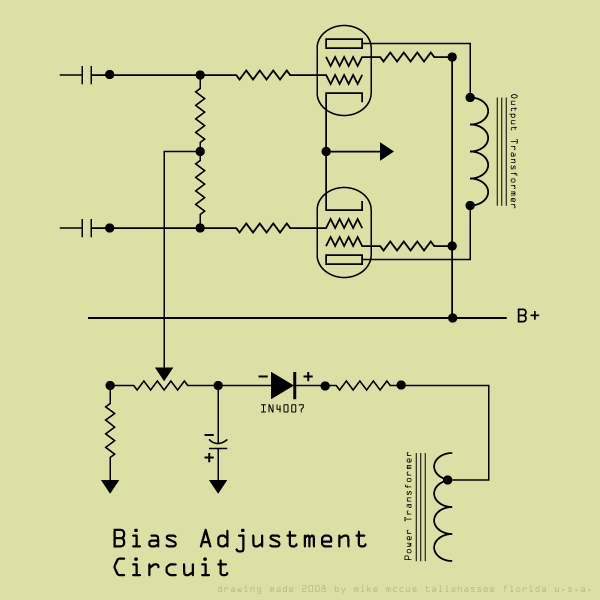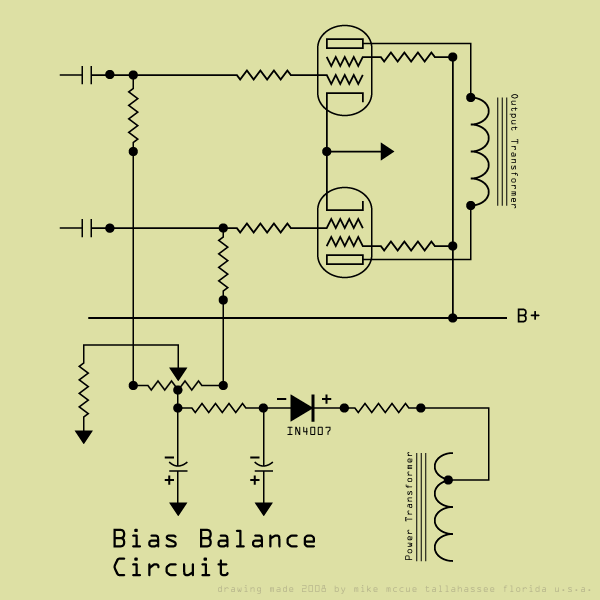Hi,
I'm trying to focus some study on the differences between the Bias Adjustment and the Bias Balance circuits common to Fender Blackface and Silverface guitar amps.
I made some drawings to help clarify my thoughts. I think they respresent in a genericized way the basic difference between the Adjust and Balance circuits.
I am writing to ask if anyone can critique/check/proof/comment the drawings, especially if I made a mistake.


Is the Bias Balance pot a specialty item? The forth solder tab on the back seems unfamiliar.
thanks for taking a look,
mike
I'm trying to focus some study on the differences between the Bias Adjustment and the Bias Balance circuits common to Fender Blackface and Silverface guitar amps.
I made some drawings to help clarify my thoughts. I think they respresent in a genericized way the basic difference between the Adjust and Balance circuits.
I am writing to ask if anyone can critique/check/proof/comment the drawings, especially if I made a mistake.


Is the Bias Balance pot a specialty item? The forth solder tab on the back seems unfamiliar.
thanks for taking a look,
mike
Comment